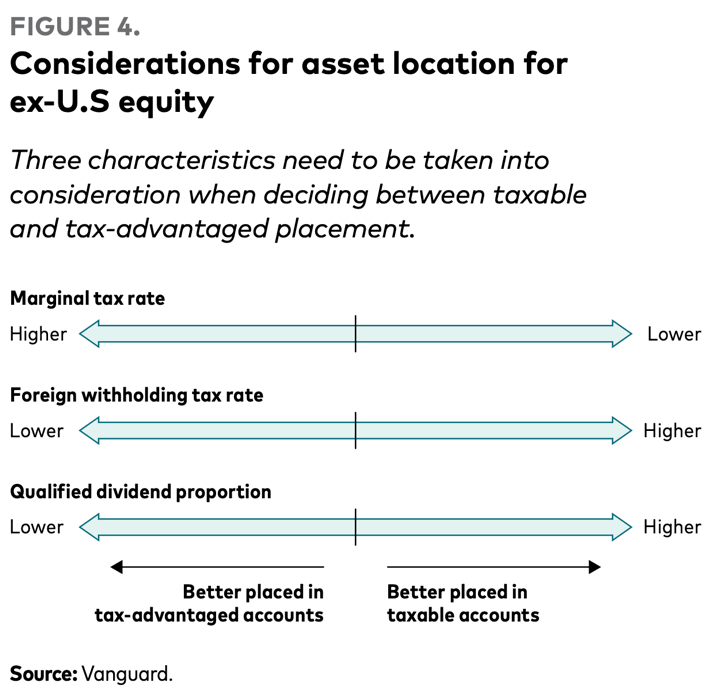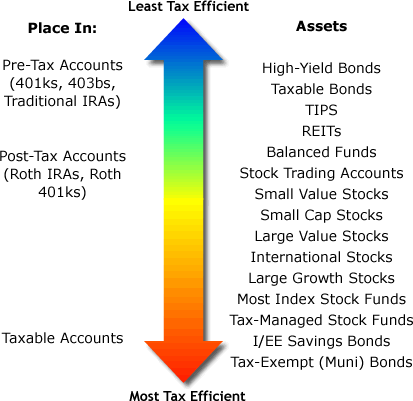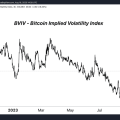There is asset allocation (what asset classes to buy and how much) and then there is asset location (where to put those asset classes). In general, there are three overall types: pre-tax accounts (Regular 401ks, 403bs, Traditional IRAs), post-tax accounts (Roth IRA, Roth 401k), and taxable brokerage accounts.
Here are two Vanguard research papers and associated articles which dig into the details. (I always download these PDFs because sometimes Vanguard takes them down after a while.) I won’t rehash the entire topic here, I’m just going to drop some links with the major highlights.

Major takeaways:
- The first paper found that even super-simple asset location principles such as placing taxable bonds in pre-tax-deferred and stocks in taxable/Roth account can still boost returns between 0.05% and 0.30% a year.
- The second paper concludes that “additional return that can be attained from asset location according to three equity subclass characteristics: region (ex-U.S., U.S.), dividend yield (growth, high dividend yield) and management style (passive, active).”
- Specifically, the second paper advises that “for most investors, ex-U.S., growth, and passive equity are best placed first in a taxable account, while U.S., high-dividend-yield, and active equity are best placed first in a tax-advantaged account.”
Here is an example chart and quote that summarizes their analysis as to why international (ex-US) stocks should have a slight preference in a taxable account.

We find that investors can potentially add up to 10 bps of additional after-tax return to their portfolio by thoughtful asset location of ex-U.S. equities. For most investors, preferentially placing ex-U.S. equity in a taxable account is the asset location strategy that maximizes after-tax return. The higher end of the added value is associated with portfolios that have both high levels of qualified dividend income and high foreign withholding rates. Only investors in the top tax bracket, who hold relatively tax-inefficient ex-U.S. equities, may find it beneficial to shield their ex-U.S. equity in a tax-advantaged account.
These conclusions still align very well my this rough “rule of thumb” graphic that I created way back in 2007 (been doing this for too long! ?):





